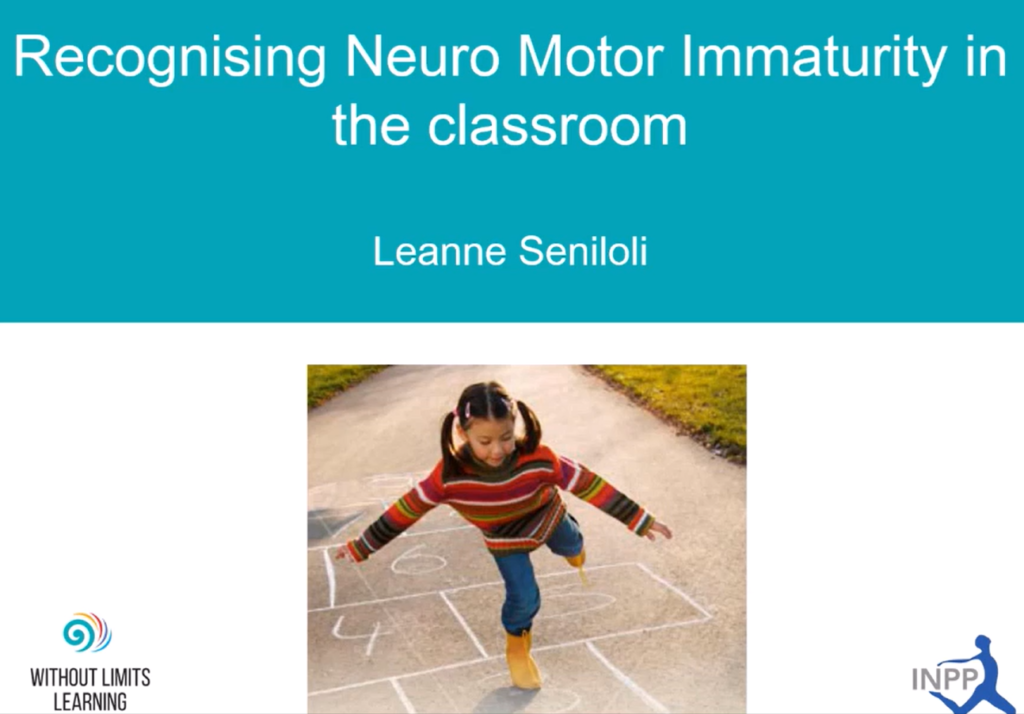Recognising Neuromotor Immaturity in the Classroom
- Home
- Recognising Neuromotor Immaturity in the Classroom
Recognising Neuromotor Immaturity in the Classroom
- As a teacher have you ever:
- Spent hours on remedial teaching with little results?
- Been tempted to bribe, threaten and cajole children into doing what you are asking?
- Do you struggle to get children to listen, pay attention and cooperate?
- Are you looking for a reason why children are displaying these behaviours?
- Are you ready to do something about it?
These behaviours, and many others are all signs of neuromotor immaturity. This is where the body and the brain aren’t communicating efficiently, or in other words the central nervous system is immature, leading the children to behave immaturely.
Many children are exhibiting these behaviours in the classroom, and with class numbers getting bigger, this becomes more of a burden on teachers. Children need to get their ‘foundation’ in place – a mature central nervous system – before they can focus on the complexities of school work.
Through this 25-minute video you will get an introduction to what primitive reflexes are and how they are related to children’s misbehaviour and academic underachievement. You will:
- Understand what’s going on with their brain pathways and information highways and why there are mixed messages.
Gain a beginning understanding of Neurons, Synapse & Myelination will be covered, and how the continued presence of primitive reflexes mixes these messages.
- Begin to recognise the underlying issues of children misbehaviour and academic underachievement.
You will discover some of the reasons why children can’t sit still, and what this has to do with balance and our vestibular system. You will learn how reflexes an cause some underlying reasons why children have writing and reading difficulties, and why there are emotionally insecurity or aggressive.
- Understand why we need to provide Physical Literacy
The importance of physical movement to primitive reflexes, and how mid-line crossing games, physical challenges, and Vestibular stimulation support academic achievement. You will have a reason to spend time off devices.
This is a perfect introduction if you are considering the Assessing Neuromotor Readiness for Learning Course or the Body Brain Blueprint.


